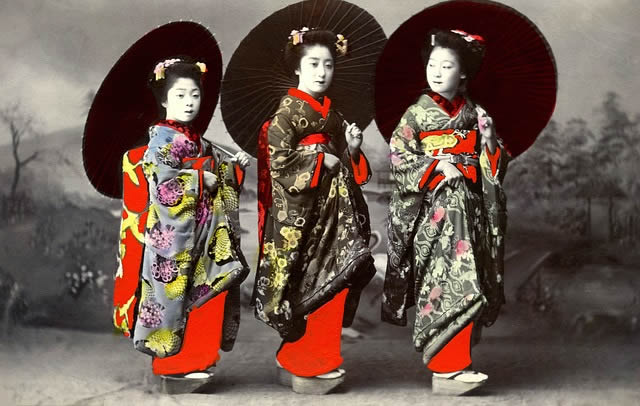先日から「The Niigata Geigi: Japan’s ‘other’ geishas -「新潟芸妓・日本のもうひとかたの芸者たち」を読んでいます。

・「新潟芸妓・日本のもうひとかたの芸者たち」(1)
・「新潟芸妓・日本のもうひとかたの芸者たち」(2)
・「新潟芸妓・日本のもうひとかたの芸者たち」(3)
However, with the advent of TV, cinema and other alternative forms of entertainment, demand for geishas declined drastically.
しかしテレビや映画等、他の娯楽が普及するにつれ、芸者の需要は激減。
By the late 1970s, Furumachi geigi numbers had dropped below 100.
1970年代後半には、古町芸妓の数は100人を切った。
By 1985, just 60 remained.
1985年には60人に。
With no new trainees joining since the late 1960s, the youngest geigis in Furumachi were in their 30s.
60年代後半以降、新しい見習いが入らなくなり、古町芸妓の最年少は30代になった。
At that time, far fewer young women were interested in devoting eight years of their lives to learning the essential geisha skills: the shamisen; the songs; the dances; the manners.
当時は人生の8年間を費やして、三味線、歌、踊り、作法など、芸者として求められる能力を身に付けようという若い女性はかなり少なかった。
Consequently, the rate of new trainees failed to keep pace with the rate of retirement.
その結果、引退者の数に新規見習いの数が追いつかなくなっていく。
Furthermore, unlike Kyoto – the refined capital of Japan for more than 1,000 years (794-1868)
さらに、1000年以上日本の洗練された首都であり続けた京都(794-1868)とは異なり
- remote Niigata is a place few tourists visit, further limiting the demand for geisha performances.
遠隔地である新潟は観光客が少なく、芸者の需要も限られる。
And by the 1980s, a lack of business forced many ryotei to close.
そして1980年代になると、客不足で多くの料亭が廃業に追い込まれた。
まあ芸者さんを呼ぶよりずっと安価な、テレビや映画で気晴らしが出来るようになったのは大きいですよね。
また知名度の点で、新潟は京都には敵わないというのも確かで・・・それらが重なって、80年代の古町花街は冬の時代を迎えたようです。
とはいえ世の中は間もなくバブル景気、新潟も苗場なんかは凄かったはずですが、果たして古町にその恩恵はあったのでしょうか。
理由は単純明快!「少ないコストでしっかり楽しく学べるから」。
私自身の経験(高機能でビックリ)をびっしり書いていますので、良かったら読んでみてください。
下のバナーからどうぞ!






